The sad fate of East L.A.’s forgotten Walk of Fame

- Share via
One day, Tommy Estrada went to the Nike store off Whittier Boulevard in East Los Angeles. As he left with bags of merch, he stepped on a flat sundial shape about the size of a manhole on the sidewalk, not realizing he was treading on Eastlos royalty.
Beneath his feet was a red granite monument for Edward James Olmos, star of “Stand and Deliver,” “Zoot Suit,” and so many other hallmarks of Chicano cinematic life. It was one of about 10 such markers on the legendary street that make up the Latino Walk of Fame, a monument created to highlight Latinos who have made East Los Angeles proud.
Estrada didn’t have a clue.
“Man, I didn’t even notice!” the 29-year-old said apologetically. “It’s my bad. People don’t really look down where they walk, I guess.”
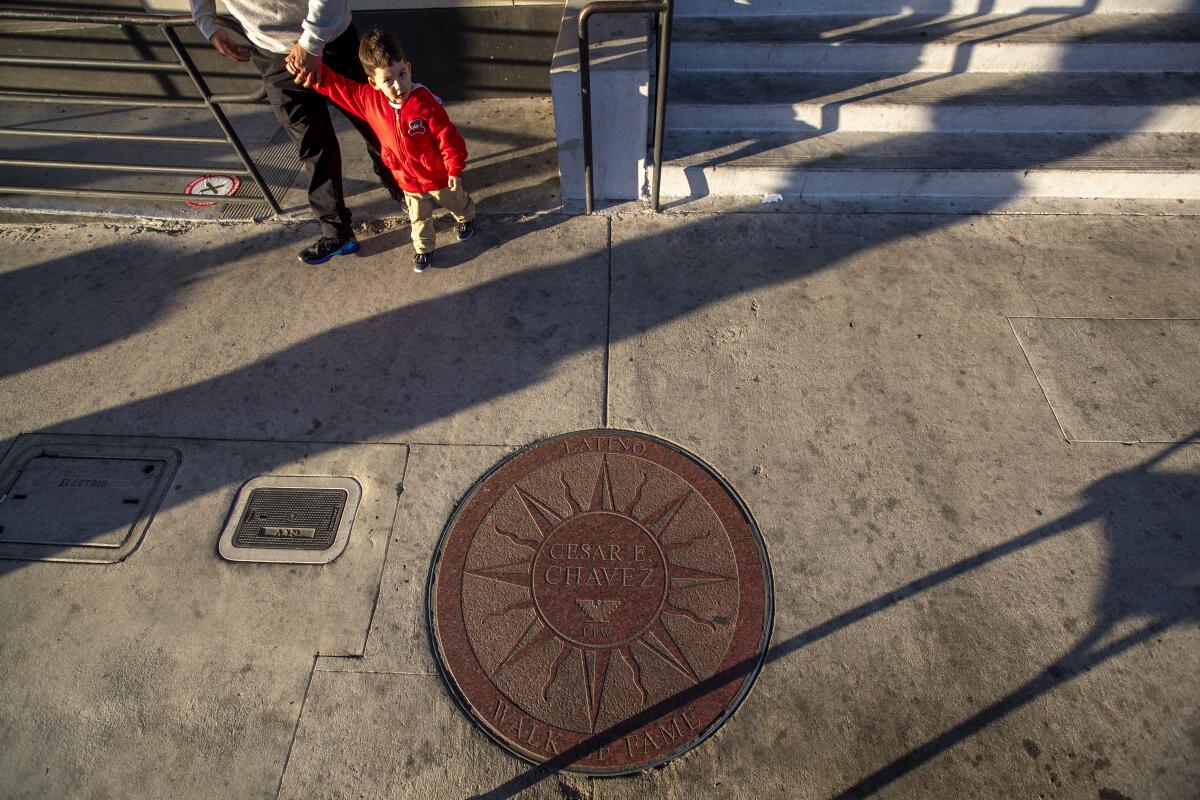
Up and down Whittier Boulevard, pedestrians ignored the Walk of Fame at best — but usually inadvertently strolled all over honorees.
Middle-aged men stood on Cesar Chavez’s plaque while they waited for a bus. Hungry diners skipped on the one outside a Wingstop dedicated to Mexican singer Graciela Beltran. A man flicked his spent cigarette on the sundial for Romana Acosta Bañuelos, the first-ever Latina to serve as U.S. treasurer.
“I always wondered what they were,” said Hortencia Delgado, 48. She was in front of an outlet store, next to a sundial for longtime Eastside congressman Ed Roybal. “It’s a nice idea, but maybe there should be more promotion?”
“I always thought it’s a little tacky for this to be happening,” admitted Antonio Mejía-Rentas, who recently wrote an essay about the Walk of Fame for East LA Weekly. “This is a good way to commemorate people from the community that had done well.”
This wasn’t the way anyone had envisioned this working out back in 1984.
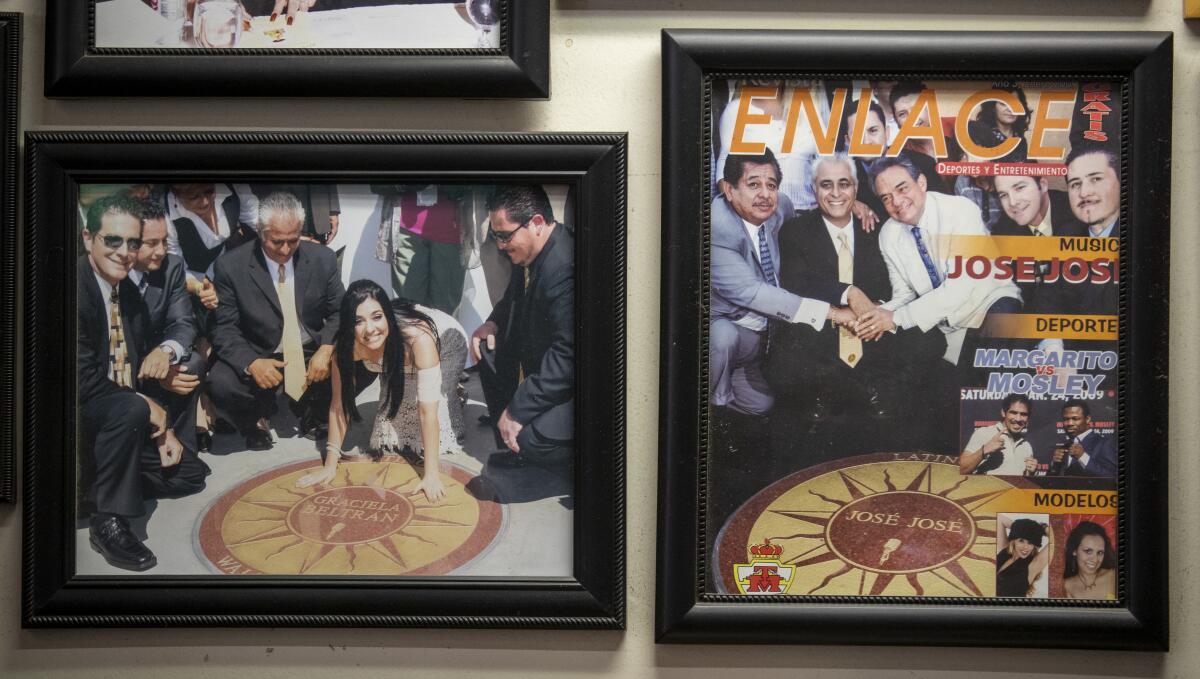
That’s when the Whittier Boulevard Merchants Assn. successfully asked the state and Los Angeles County for $1.5 million to beautify the mile of road between Arizona and Atlantic avenues. The funds paid for the now-iconic Whittier Boulevard arch, and for more than 250 slots cut on the street’s sidewalks in anticipation of a Who’s Who of beautiful sundials to honor celebrities, activists and hometown heroes.
But the first one — for the Whittier Boulevard Merchants Assn. — didn’t pop up until 1997. (And let’s face it, the Whittier Boulevard Merchants Assn. doesn’t have the same ring to it as Antonio Aguilar, who didn’t receive his sundial until 2007. Which is to say, no one is going to take a selfie doing the ol’ thumbs up sign in front of the OG one). The few others installed in the years since are now faded and smudged and placed scattershot. The empty slots, currently filled with rubber and a geometric Aztec motif, await a true Walk of Fame that may never come.
This Latino Walk of Fame pales in comparison to similar ambulatory efforts in Southern California, like the Promenade of Prominence in Watts for Black icons and Palm Spring’s Walk of Stars. And it’s a sad afterthought to the other Latino Walk of Fame, which is still going strong in Miami’s Little Havana after 30 years.
I wanted to ask Tony DeMarco, the acting president of the Whittier Boulevard Merchants Assn., why his group lets its Latino Walk of Fame function as little better than a literal doormat for East L.A. instead of the tourist attraction it should be.
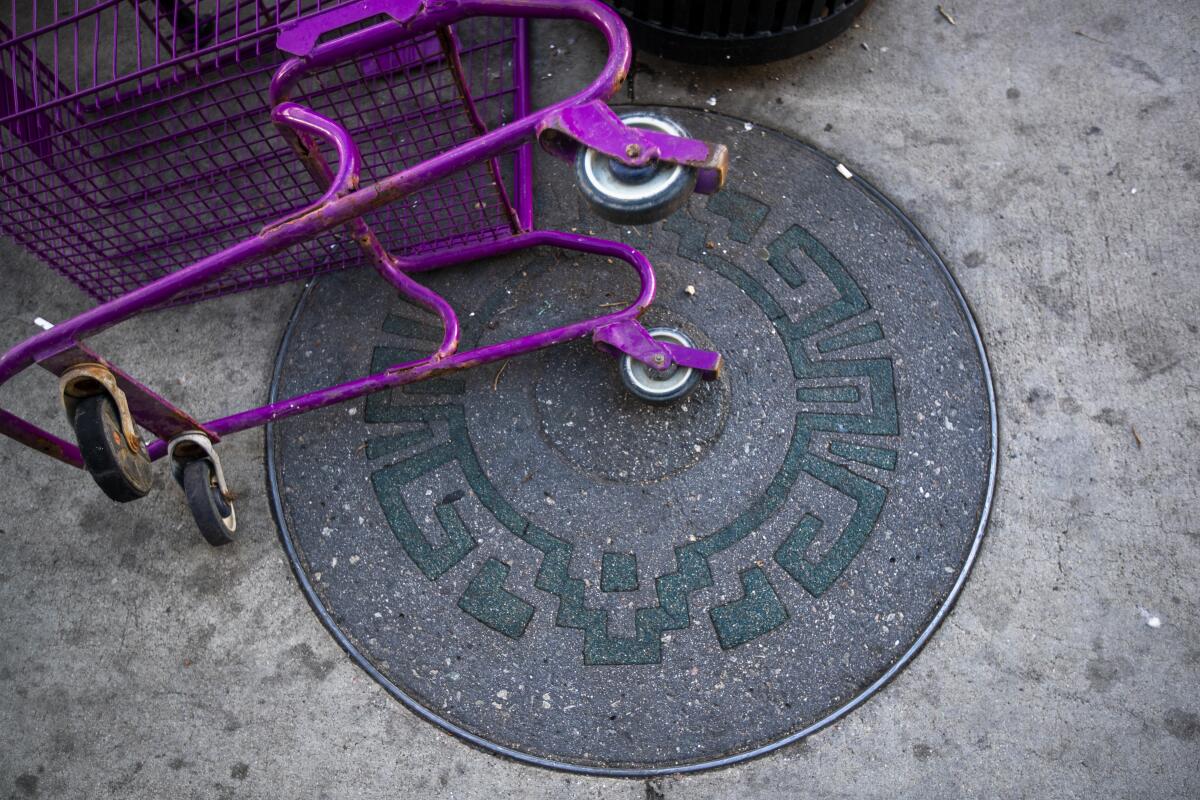
“I know what your question’s going to be,” he sighed when we talked over the phone. “My question back to you is, ‘Why do you think we don’t have more?’ Because I want you to get the impression from me that, God, I would love to put one every month.”
What emerged in our chat was how the Latino Walk of Fame serves as a metaphor for East Los Angeles: a wonderful, historical state of mind perpetually weighed down by lack of investment.
People outside of L.A. — and even some within — tend to forget that East Los Angeles is an unincorporated community. Its only real elected official is a supervisor — currently Hilda Solis — in charge of an area that stretches from Little Tokyo to Claremont. So public funds are always anemic, while private funds are even scarcer — a civic cocktail that guarantees that any municipal project takes years, if not decades, to finish.
DeMarco says Solis and her predecessors used to find enough funds to help pay for the Walk of Fame. Turns out the endeavor is expensive: Each sundial costs about $10,000, which includes street closures and sheriff’s deputies to serve as security and the price of the sundial itself.

“And sometimes, the people we’d salute would say, ‘Hey, you have to put me up [in a hotel] for me to go, and my family up, too,’” DeMarco said.
But he felt it was all worth it. “At the end of the day, you just break even, but the big thing is the attention.”
The Latino Walk of Fame had a good run once it started, averaging about a ceremony a year. The one for Olmos and the math teacher he famously portrayed on film, the late Jaime Escalante of East L.A.’s Garfield High, drew national coverage in 2000. Mentions began to pop up in tourist guides and to-do weekend lists. The last sundial was placed was in 2008, for Latin music heartthrob José José.
“We had hundreds of people,” DeMarco said. “We got worldwide attention — it was amazing. It was good for the boulevard, and good for East L.A.”
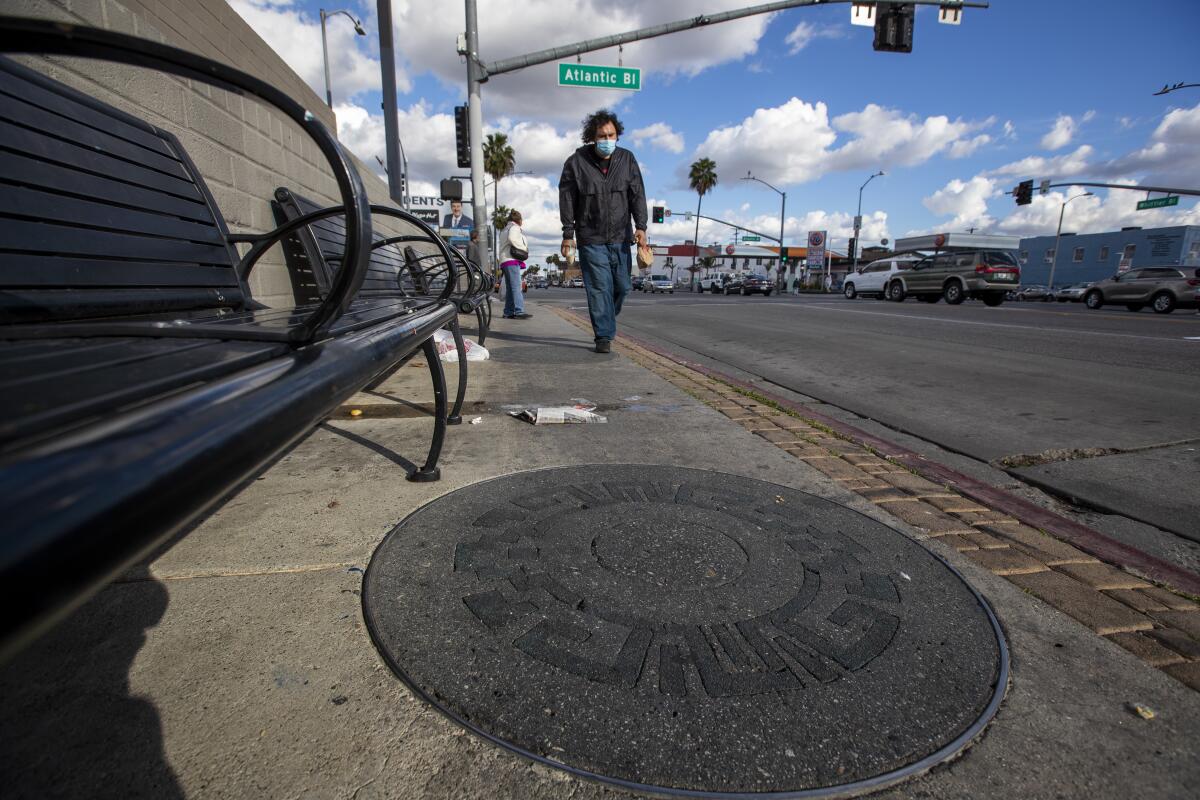
But the Great Recession gutted county finances that never quite returned.
The continued lack of deep-pocketed tenants on Whittier Boulevard made finding sponsors difficult. As East Los Angeles tries to dig itself out of the economic devastation left by the COVID-19 pandemic, DeMarco doesn’t see another Latino Walk of Fame inductee any time soon.
“The lift of getting it back going is three times the lift of keeping it going,” he said. “It’s a valuable and historical thing, but we haven’t had resources and time to get it back going.”
At least Solis is committed — one day. “I am hopeful that we will revisit the Latino Walk of Fame on Whittier after we come out of this pandemic and get back to other community projects in the future,” the supervisor said in a statement.
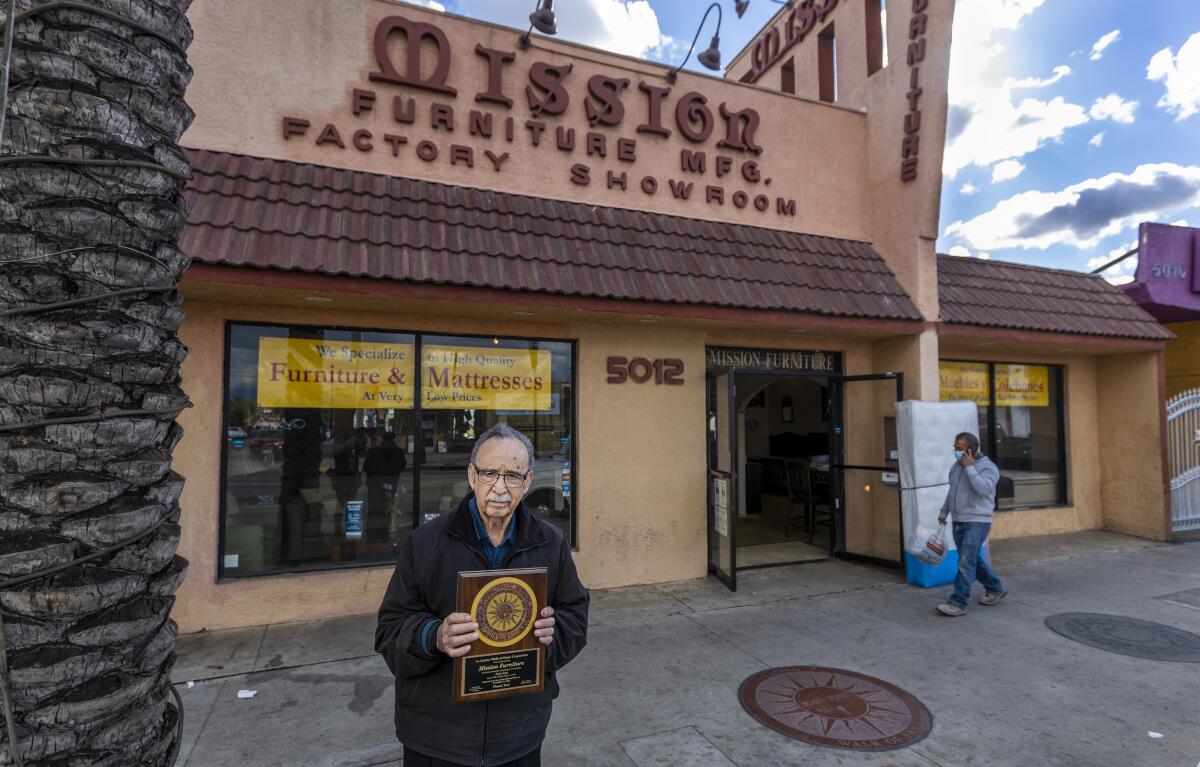
My final stop on my Latino Walk of Fame trip was Mission Furniture, where José José’s sundial lies. The Acevedo family has made and sold their own furniture from here since 1971; their 50th anniversary is next month.
“It was a really cool project for a while, but it’s been harder to do,” said owner Steven Acevedo, a former merchant’s association president. “Believe me, I wish it would keep going. But it’s hard to concentrate on those things when people are trying to keep the doors open.”
The 48-year-old took me toward the back of the showroom to show me photos of the party held for José José. The singer beamed in front of his sundial alongside business owners and politicos. That’s when I realized all the markers were originally gilded. Only traces of gold remain on them, if at all.
More to Read
Sign up for Essential California
The most important California stories and recommendations in your inbox every morning.
You may occasionally receive promotional content from the Los Angeles Times.














